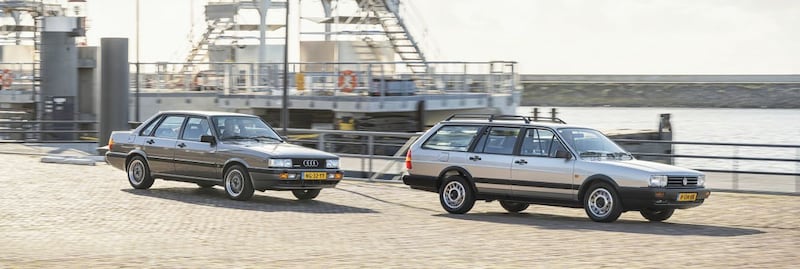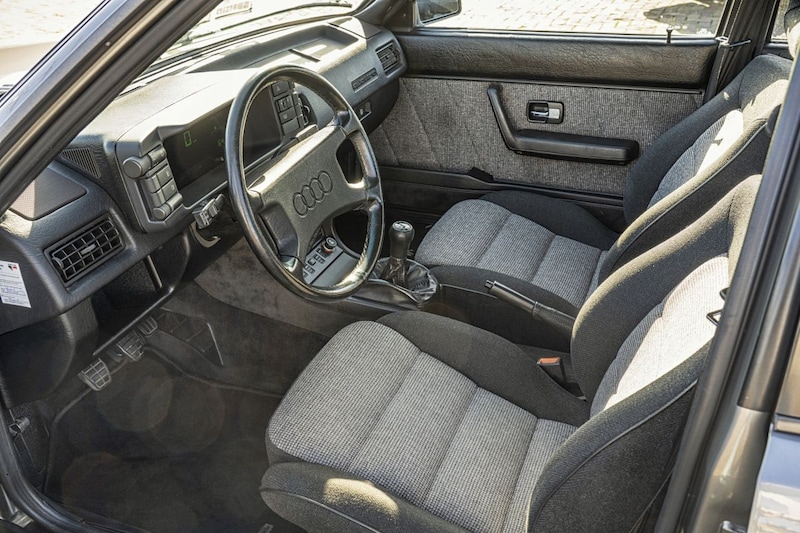Passat Variant GT Syncro vs. Audi 90 Quattro
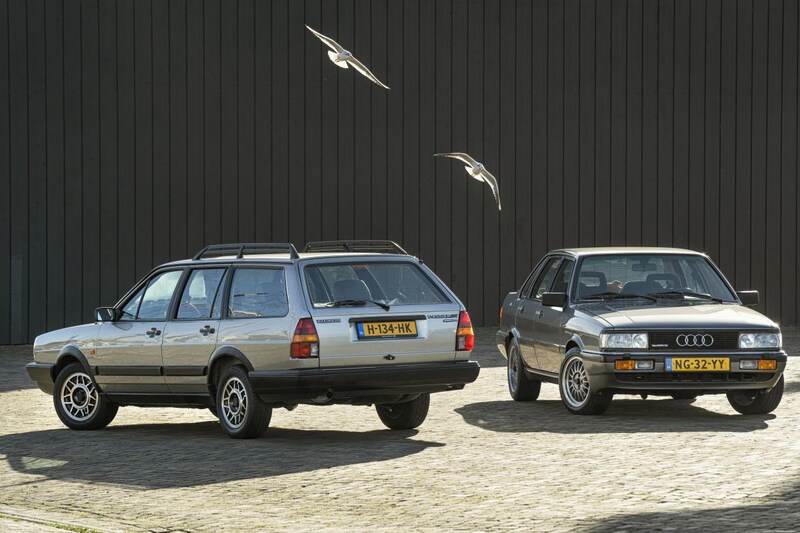

Since Audi supplied the 80 and 90 with quattro all-wheel drive, Volkswagen could easily equip the closely related VW Passat 32b with the same drive. To find out whether that Passat Syncro is a kind of Passaudi, we take a 90 quattro with us in its wake.
Let me take you back to the Passat that represented Volkswagen in the middle class in the 1980s. The 32b did that from the end of 1980 until well into 1988. Not a model that graced posters in boys’ rooms and if you still have it on the retina, then probably as a good version, equipped with a 1.3, 1.6 or 1.8 or diesel. You also had the latter as a turbo, but then you probably walked past it just as carelessly. Certainly the Variant was known for its enormous space, which made the VW an ideal means of transport for representatives, construction workers and families.
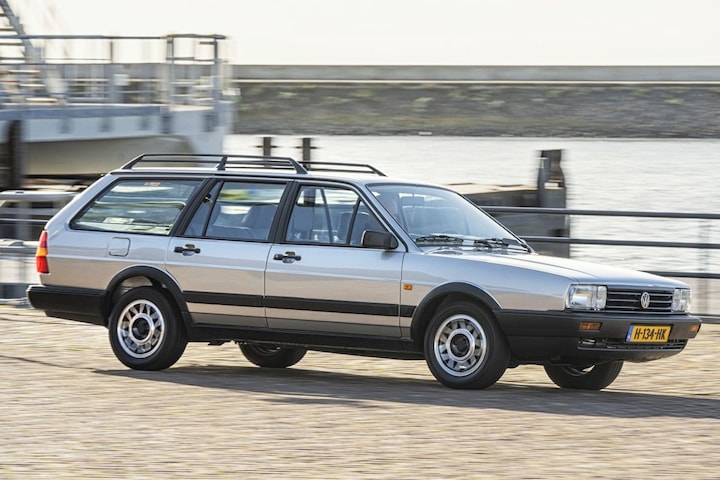
Passat was also available with a five-cylinder and 4×4
The fact that there were also copies with a five-cylinder engine and even with a 4×4 has long been forgotten. You hardly ever saw such variants in the Netherlands and those versions were not for sale at all with their subcutaneous Audi technology. My father’s 1.6 turbodiesel still had a proud Turbodiesel shield on the grille, the GT Syncro we are on the road with has a nose without reference to the engine. The front is just as clean as that of a 1.3 or a 1.6. Five-cylinder Passats were also available with only front-wheel drive and you could recognize them mainly by the sound. Those rumbling, raw sounds from such a good middle class were difficult to reconcile. I still remember the brothers I took snorkeling lessons with over 30 years ago. So they were picked up in a gray Passat Variant with a five-cylinder engine. I don’t remember whether it was a Syncro, but the lure of the engine intrigued me.
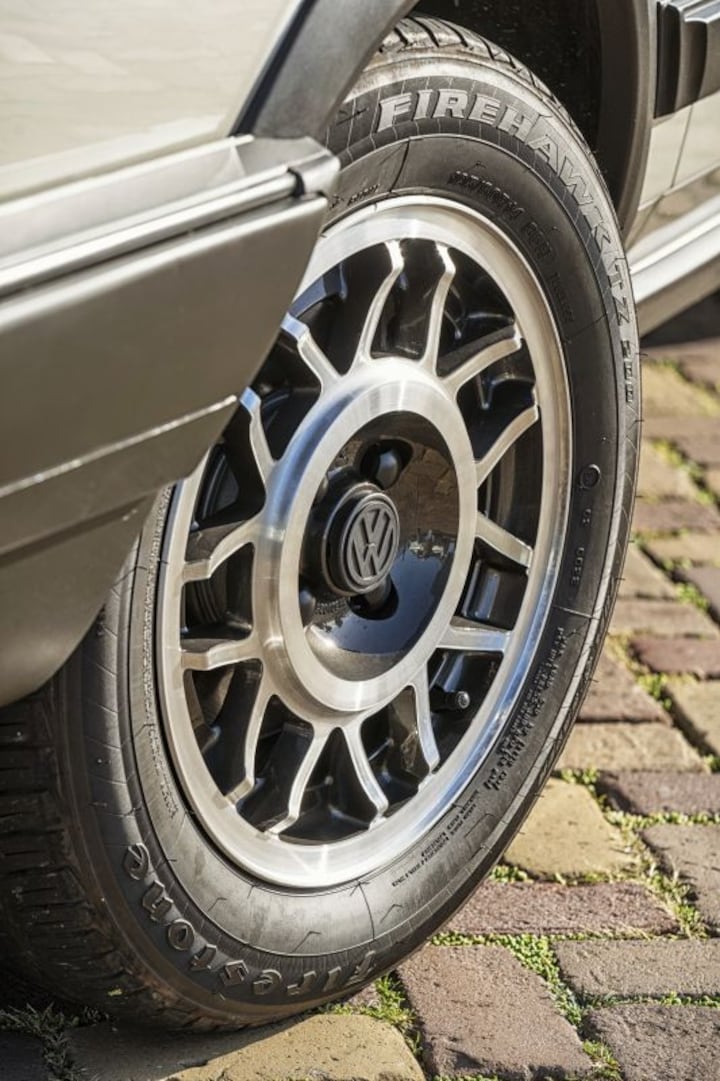
14-inch alloy on top Passat
And so we are more than three decades later, with a gray Variant GT Syncro, the same color as the Passats of my youth that I outlined above. That it is a top Passat is evident from the 14-inch alloy wheels. You saw this design on thicker versions of the Santana, as the sedan based on this Passat was initially called, sometimes on Sciroccos and the latest version of the VW Golf I Cabriolet also showed it off. In addition to the special wheels, there is the black frame of the windows and black frames protect the sides against swinging open doors. With this finery, a topper distinguishes itself from the lesser gods, although we only see the word Syncro processed in the rear window heating at the end of the session, which, just like the designation quattro, is incorporated in the filaments of the 90. If a layer of snow or ice is defrosted on that rear window, it really stands out.

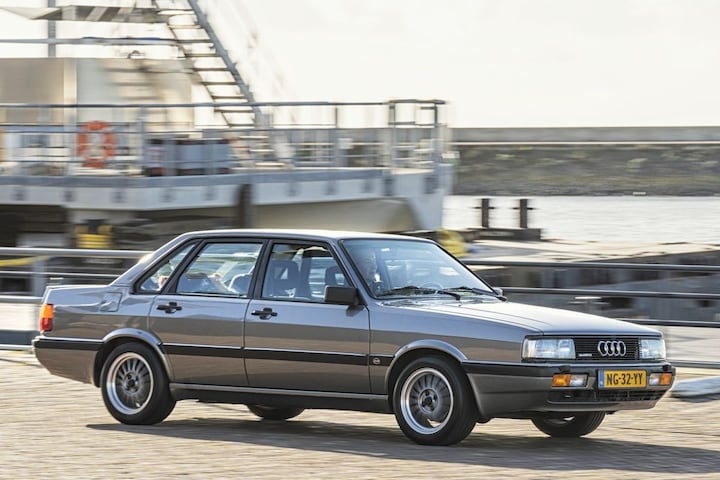
There is no Avant of this generation of mid-range Audi yet
The 90 quattro can come along because today we find out whether the Passat Variant GT Syncro is actually the station wagon version of that premium sedan. Audi did deliver an Avant of the 100 and 200, but that version did not exist for the 80 and 90 from that time. Of the 90, there never existed, because when the first 80 Avant came around the corner, the 90 had already been renamed 80. The 90 was until 1991 (from 1987 as the new model) an 80 with a five-cylinder engine, although or not in combination with quattro drive, where you should know that the 80 was also supplied as a five-cylinder and as a quattro until 1984. With the arrival of the 90, Audi started to call those more expensive versions differently (see box). And so the 90 that was delivered until 1986 is also related to the Passat 32b.

In front of the Volkswagen Passat, behind the Audi 90.
Under the hood, Passat and 90 are very similar
We’ll start under the hood. It already looks very similar. Audi has put more time into it under bonnet design, which results in more covers, yet it looks like an identical five-cylinder in the noses. Hung far forward to accommodate the differential between the five-speed manual transmission and the cardan shaft. There is a 2.0 five-cylinder in the Passat, a 2.2 in the 90, but you could also get the unit with 200 cc less in the more expensive brother of the Audi 80. Then you had to settle for 115 hp, the 2.2 has 136 hp.

You expect nothing but a five-cylinder sound from the Audi, it is surprising with the Passat. Later, the Passat GT Syncro got the same 136 hp 2.2 five-cylinder as the 90 had.
The fact that the 90 sounds hotter than the Passat is mainly due to the rear muffler with a double pipe, the Passat has a single one. But otherwise the station wagon sounds like a genuine Audi 5-cylinder from that time and that sounds like music to our ears. Oddly enough, the 2.0-litre feels a bit choppy on a cold start, although this version has a system that briefly injects extra fuel when the coolant temperature drops below 35 degrees. This cold start atomizer is missing on the 2.2 but it feels less moody. The 90 2.2, which has been cared for to perfection, runs with more pleasure, even when it is cold. It may make a difference that the Passat has not been in the possession of Hessel Terpstra for very long, the quattro specialist from Friesland who has cherished his 90 just like his other classics and young timers for years, although there is the necessary tender loving care in this classic imported from Northern Italy.
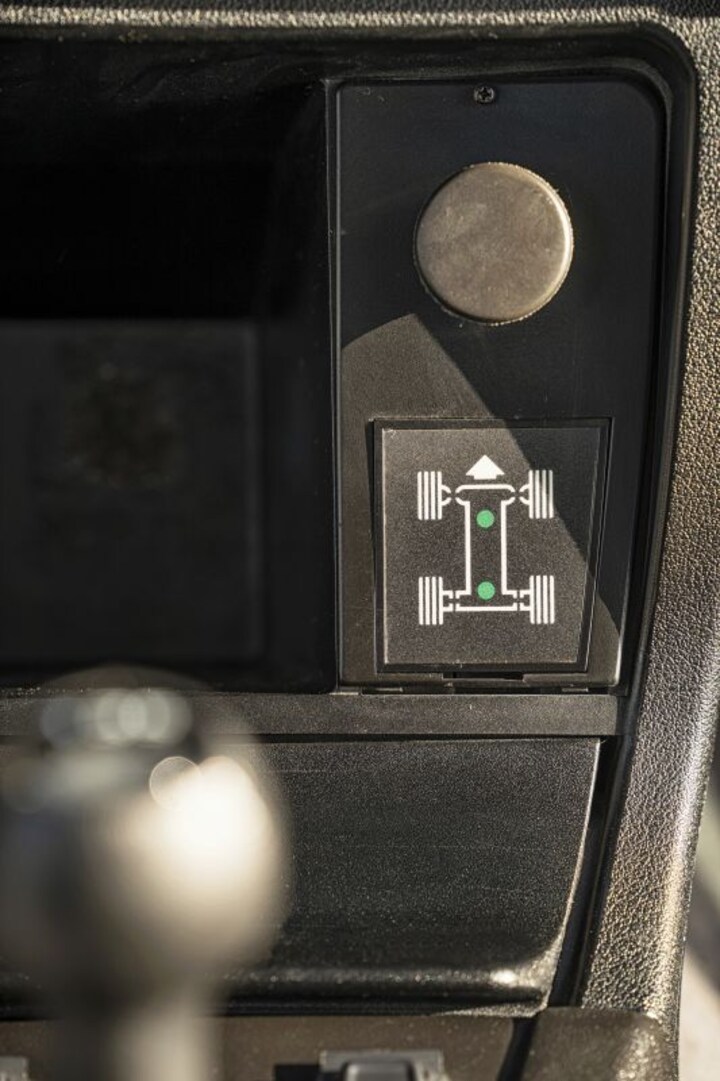
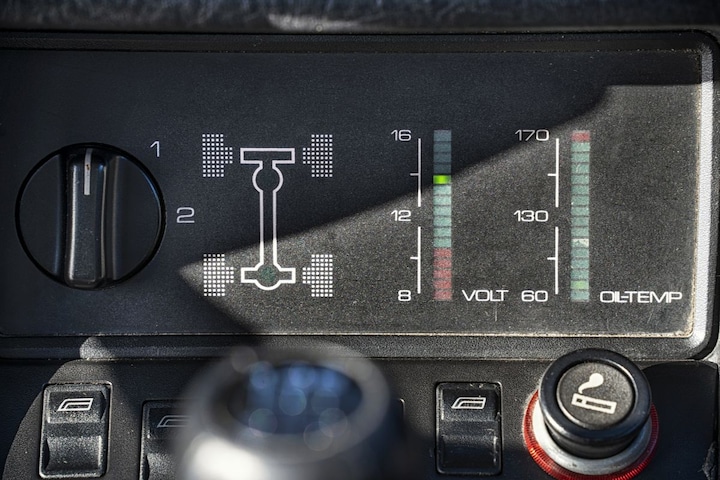
Above the locking button of the Volkswagen Passat, below that of the Audi 90.
Permanent four-wheel drive
The powertrain of the Passat Variant GT Syncro also does not run as smoothly as that of the 90 quattro. You feel more of the drive to the rear wheels, which continuously sends its forces to the rear axle; after all, it is a permanent four-wheel drive. Only the five-speed does not make a difference in feeling. If you were to transfer the exact shifting transmission from one car to the other, it would provide an identical shifting experience. That’s still an agreement, during a report of which you expect to see more in advance. A surprising outcome, because under the skin the Volkswagen is a quattro that is identical to its premium family member up to and including the differentials. They had to come up with something else for the rear suspension in Wolfsburg. After all, the Variant had to keep its flat loading floor as a pack mule and that was not possible with the same construction as for the 80/90 quattro. We see that clearly when we put both 4x4s on the bridge at the end of the session.
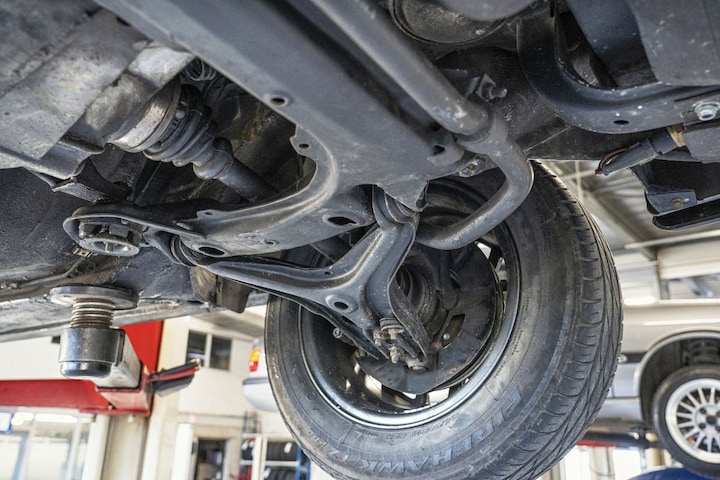
Rear suspension of the T3 Synchro
The suspension at the front is almost identical to that of the Audi, at the rear the Passat has a suspension with cross arms that is closely related to what is under the Volkswagen T3 Syncro, the Transporter with 4×4. It partly explains why its handling and stiffness feel different from that of the sleek Audi 90 quattro, where the rear suspension is actually mirrored to the construction at the front.
The Passat is a workhorse
The construction of the wheel suspension is very decisive for how a car feels, that has become clear once again. All things considered, the Passat Variant GT Syncro, despite its five-cylinder and quattro technology, turns out not to be the Passaudi that we thought we would find. Compared to the much more refined Audi, the Passat feels like a workhorse. A case of premium versus no-nonsense, in which it becomes clear that in the 1980s Audi’s more exclusive image was more than just hot air, served up by overzealous marketers. Apart from that different feeling, the nicer materials in the 90 do not miss their effect. The showpiece of the Passat range is admittedly a bit more expensive on the inside than normal versions, but that is purely a merit of its equipment.

The Volkswagen Passat inside, a sumptuous interior for a Passat of the time, but take a look at the Audi 90 interior below.

The unimaginatively designed dashboard is made of the same gloomy materials as a 1.6 CL. Adding some atmosphere is a tachometer with a small ‘5’ in the center as a reference to the number of cylinders. The button adorns the center console with which you can not only lock the differential between the gearbox and cardan shaft, but also the rear so that the rear axle is locked. The word Syncro is not printed in the dashboard like the quattro designation in the 90. The GT Syncro driver from that time did have electric windows for the front doors, but otherwise the interior is far removed from what we find in the 90. In the Audi, not only does the operation of the differentials through the buttons and slightly higher quality look, we even see a real digital dashboard. Quite a difference with the nicer softer materials in the Audi interior, where the designation quattro is stamped into the dashboard.
This story was previously published in AutoWeek Classics 13 2020.
Some background information is provided in the boxes below
What about the Audi 80/90 quattro?
The second Audi 80 that appeared in 1978 was again closely related to the later second version of the Volkswagen Passat. Until 1981, the then entry-level model of the premium sister brand was only available with four-cylinder, but in that year Audi thought the time was right to also supply the mid-sized car as a five-cylinder. And so more and more technology from the more expensive and larger models seeped through to the ‘lower regions’, culminating in the arrival of the 80 quattro, which was linked to the 2.0 five-cylinder. You could only get the four-door as a five-cylinder and quattro, not the two-door, but they were still not satisfied with the delivery program of the 80 in Ingolstadt. With the last facelift in 1984, the 80s with five-cylinder got the type designation 90 on the back. This way they could compete even better with the now presented E30 generation of the BMW 3 series and the Mercedes 190, was the idea. Always armed with five-cylinder engines, the 2.0 or the 2.2, where you could also get the latter as a quattro.
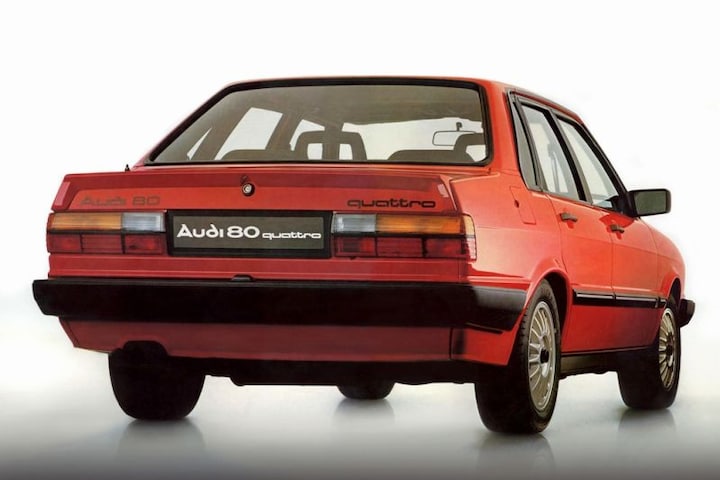
The Audi 80 quattro, this first series shown was first only as a five-cylinder, when the 90 came, the facelifted 80 B2 was also available as a four-cylinder with four-wheel drive.
But syncro was a different system than quattro, what about that?
The Passat syncro has quattro technology, the Golf II syncro has a different type of four-wheel drive. There is a viscous coupling between the transmission and the cardan shaft, which distributes the driving forces between the front and rear axles in dependence on slip. The focus is on the front wheels until slip occurs. If the front wheels turn faster than the rear wheels, the lamellae in the clutch will rotate with each other due to the thickening fluid in the silicone fluid bath. The viscous coupling is housed in a cylindrical housing. This determines whether more tractive force goes to the rear axle. Also with the four-wheel drive Golf there was plenty of space at the rear axle. The Golf syncro got the same rear axle construction as the Passat syncro, but therefore had to sacrifice luggage space compared to the normal front-wheel drive versions. The Golf syncro has the 1.8 four-cylinder petrol engine; later, Volkswagen also applied the syncro technology to the Rallye Golf, the homologation special for participation in the World Rally Championship.

Volkswagen Golf syncro, as 1.8 but later the four-wheel drive also appeared in the Rallye Golf and in the even more exclusive Golf Limited.
.
– Thanks for information from Autoweek.nl
